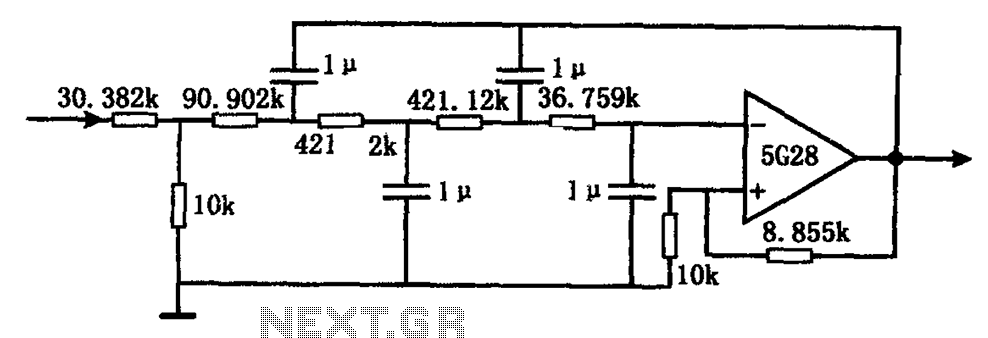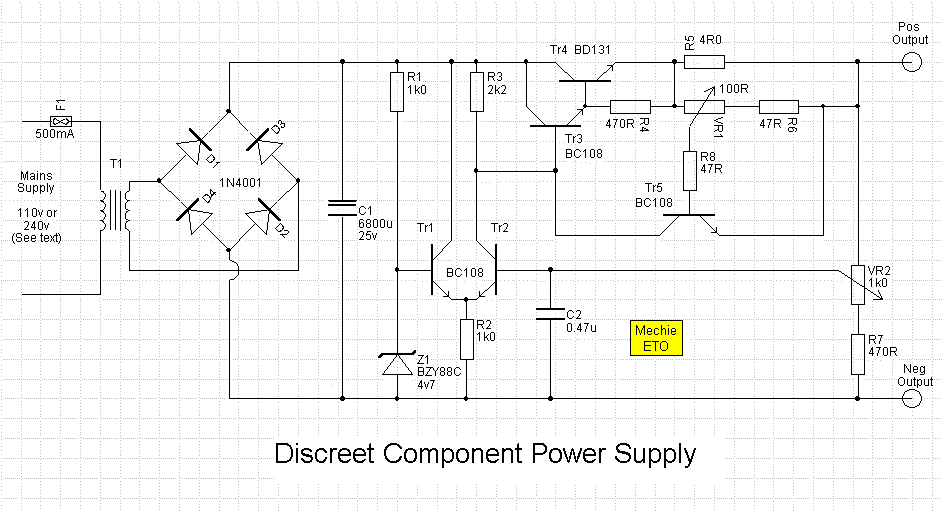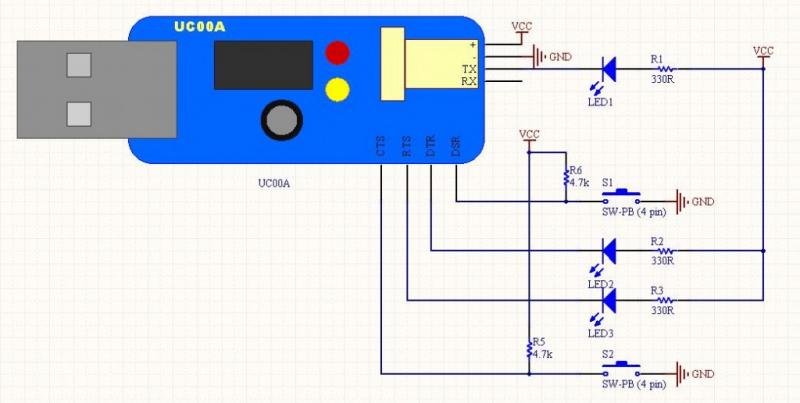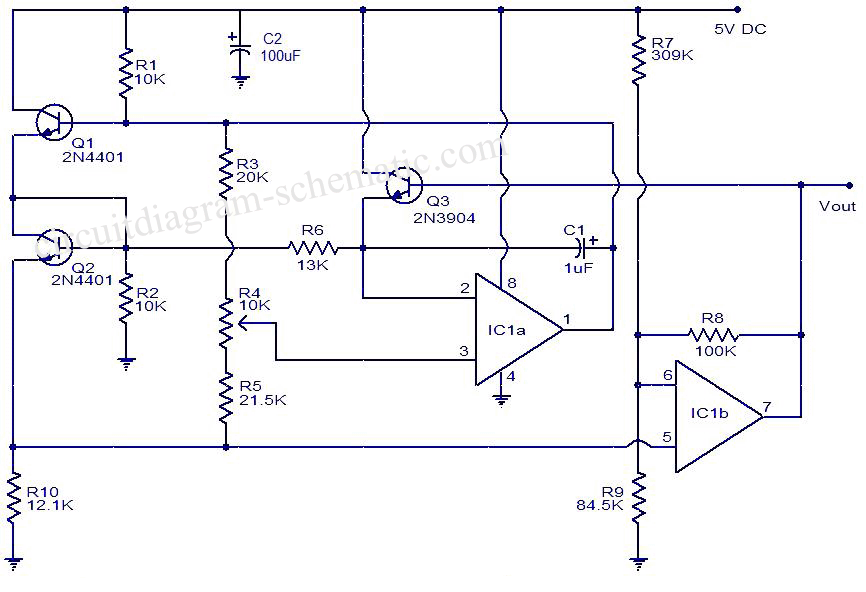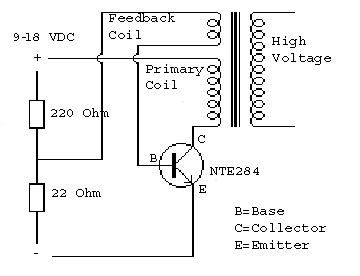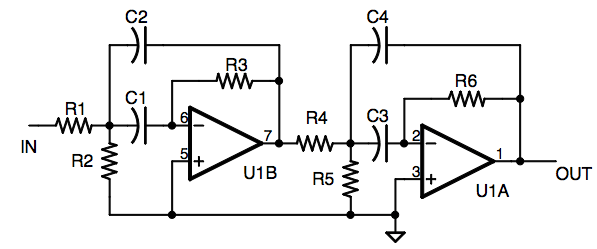Resistors in Series
1. Definition and Characteristics of Series Circuits
Definition and Characteristics of Series Circuits
In a series circuit, resistors are connected end-to-end such that there is only a single path for current to flow. The defining characteristic of this configuration is that the same current I passes through each resistor sequentially, while the total voltage Vtotal is distributed across them. This behavior arises from Kirchhoff’s Voltage Law (KVL), which states that the sum of potential differences around any closed loop must equal zero.
Mathematical Derivation of Equivalent Resistance
For n resistors connected in series, the total resistance Req is the sum of individual resistances. This can be derived from Ohm’s Law (V = IR) and KVL:
Substituting Ohm’s Law for each voltage drop:
Since current I is constant in a series circuit, it cancels out:
Key Characteristics
- Current Uniformity: Identical current flows through all components.
- Voltage Division: The voltage across each resistor is proportional to its resistance (Vi = IRi).
- Additive Resistance: Total resistance always exceeds the largest individual resistor.
- Failure Mode: An open circuit in any resistor disrupts the entire path.
Practical Implications
Series configurations are ubiquitous in voltage dividers, current-limiting circuits, and sensor networks. For example, precision resistor chains in analog-to-digital converters rely on series connections to generate reference voltages. In high-power applications, series resistors distribute thermal dissipation, though tolerance mismatches can lead to uneven power sharing.
Visualization
A series circuit with three resistors (R1, R2, R3) shows a direct line from the voltage source through each component, with no branching paths. The equivalent resistance Req is the straight arithmetic sum of the three values.
1.2 Key Properties of Resistors in Series
Equivalent Resistance
When resistors are connected in series, the total or equivalent resistance (Req) is the sum of the individual resistances. This arises because the current must flow sequentially through each resistor, encountering their resistances additively. Mathematically:
For example, three resistors of 10 Ω, 20 Ω, and 30 Ω in series yield an equivalent resistance of 60 Ω. This property holds regardless of the resistor values or their order in the series chain.
Current Uniformity
In a series configuration, the same current flows through every resistor. This is a direct consequence of Kirchhoff's Current Law (KCL), which states that charge cannot accumulate at any node in a steady-state DC circuit. Thus:
This uniformity is critical in applications like current sensing, where series resistors ensure identical current flow through measurement shunts.
Voltage Division
The voltage across each resistor in series is proportional to its resistance. The total voltage (Vtotal) divides according to:
This forms the basis of voltage divider circuits, widely used in signal conditioning and reference voltage generation. For instance, in a 12 V circuit with two series resistors (R1 = 2 kΩ, R2 = 4 kΩ), the voltages across R1 and R2 are 4 V and 8 V, respectively.
Power Dissipation
Power dissipation in each resistor is given by P = I²R. Since current is uniform, higher-value resistors dissipate more power. The total power is the sum of individual dissipations:
This property is crucial in designing circuits with power constraints, ensuring no single resistor exceeds its thermal limits.
Practical Implications
- Fault Tolerance: An open circuit in one resistor disrupts the entire series path, making series configurations less fault-tolerant than parallel ones.
- Precision Networks: Series resistors are used in precision voltage dividers and Wheatstone bridges, where ratio matching is essential.
- Load Sharing: In high-power applications, multiple resistors in series distribute voltage stress, preventing single-component failure.
Frequency-Dependent Behavior
At high frequencies, parasitic capacitance and inductance introduce impedance (Z), altering the purely resistive behavior. The equivalent impedance becomes:
where Lk and Ck are parasitic elements. This is significant in RF circuits and transmission line analysis.
1.3 Common Applications of Series Resistor Configurations
Voltage Division and Attenuation
Series resistors are fundamental in constructing voltage dividers, which scale down an input voltage to a desired level. The output voltage \( V_{out} \) across resistor \( R_2 \) in a two-resistor divider is given by:
This principle is widely used in sensor interfacing, where high voltages must be attenuated to match the input range of analog-to-digital converters (ADCs). For precision applications, resistors with low temperature coefficients (e.g., 25 ppm/°C) are selected to minimize drift.
Current Limiting and LED Driving
In LED circuits, series resistors enforce safe operating currents by exploiting Ohm’s Law:
For example, a 5V supply driving a red LED (\( V_{LED} \approx 1.8V \)) at 20 mA requires:
This configuration prevents thermal runaway and ensures consistent brightness. In high-power applications, resistors must dissipate power \( P = I^2R \) without exceeding their ratings.
Impedance Matching in RF Circuits
Series resistors combine with parallel components to create ladder networks for impedance matching. In transmission lines, the characteristic impedance \( Z_0 \) is matched using resistive terminations to minimize reflections. For instance, a 50 Ω source driving a 75 Ω load may use a series 25 Ω resistor, though this introduces 3 dB attenuation:
Pull-Up/Pull-Down Configurations
Digital logic circuits use series resistors with pull-up/down networks to define default states while limiting current during signal transitions. In I²C buses, pull-up resistors \( R_{pu} \) set the logic high level while controlling rise time \( \tau \):
Typical values range from 1 kΩ to 10 kΩ, balancing speed and power consumption.
Inrush Current Suppression
Power supplies employ negative temperature coefficient (NTC) thermistors in series with mains inputs to limit inrush current. The thermistor’s high initial resistance drops as it heats, minimizing energy loss during steady-state operation. For capacitive loads, the peak current \( I_{peak} \) is constrained by:
Precision Measurement Circuits
Kelvin-Varley dividers use cascaded series resistors to achieve voltage division with ppm-level accuracy. In four-wire resistance measurements, series resistors isolate the current injection path from voltage sensing lines, eliminating lead resistance errors.
2. Deriving the Equivalent Resistance Formula
2.1 Deriving the Equivalent Resistance Formula
Consider a series circuit with N resistors connected end-to-end, where the current I flows uniformly through each resistor. Let the individual resistances be R1, R2, ..., RN. Kirchhoff's voltage law dictates that the total voltage Vtotal across the series combination equals the sum of voltage drops across each resistor:
Applying Ohm's law (V = IR) to each resistor yields:
The current I is common to all terms and can be factored out:
By definition, the equivalent resistance Req satisfies Vtotal = IReq. Comparing this with the previous equation gives:
Since I ≠0, it cancels out, leaving the fundamental result:
Practical Implications
This derivation has immediate consequences for circuit design:
- Voltage division: The voltage drop across each resistor is proportional to its resistance relative to Req.
- Current limitation: Adding resistors in series increases total resistance, reducing current for a fixed voltage source.
- Precision networks: Series combinations allow fine-tuning resistance values by summing standardized components.
Historical Context
Gustav Kirchhoff formulated his circuit laws in 1845, providing the theoretical foundation for this derivation. Series resistor networks became essential in early telegraph systems, where precise voltage division was critical for signal transmission over long distances.
Experimental Verification
The formula can be confirmed experimentally by:
- Measuring individual resistances with a multimeter
- Connecting them in series and measuring Req
- Comparing the result with the calculated sum
Modern digital multimeters typically show agreement within 0.1% for precision resistors, validating the theoretical prediction.
2.2 Voltage Division in Series Circuits
In a series resistor network, the total applied voltage divides proportionally across each resistor based on its resistance relative to the total resistance. This principle, known as the voltage divider rule, is fundamental in circuit analysis and design.
Mathematical Derivation
Consider a series circuit with N resistors \( R_1, R_2, \dots, R_N \) connected to a voltage source \( V_{in} \). The current \( I \) flowing through the circuit is uniform and given by Ohm's Law:
where \( R_{total} = R_1 + R_2 + \dots + R_N \). The voltage drop \( V_k \) across the \( k \)-th resistor is:
This equation forms the basis of the voltage divider rule, showing that the voltage across each resistor is proportional to its fraction of the total resistance.
Practical Implications
Voltage division is widely used in:
- Sensor interfacing: Scaling down sensor outputs to match ADC input ranges.
- Biasing circuits: Setting reference voltages in transistor amplifiers.
- Signal conditioning: Attenuating signals before processing.
A common implementation involves two resistors \( R_1 \) and \( R_2 \), producing an output voltage \( V_{out} \) at their junction:
Non-Ideal Considerations
In real-world applications, the voltage divider's accuracy is affected by:
- Load resistance: A parallel load \( R_L \) alters the effective \( R_2 \), requiring \( R_1, R_2 \ll R_L \) for minimal deviation.
- Resistor tolerance: Manufacturing tolerances introduce errors in division ratios.
- Temperature dependence: Resistivity changes with temperature, particularly in non-metal-film resistors.
Extended Case: Multiple Voltage Dividers
For cascaded dividers (e.g., \( V_{in} \rightarrow R_1 \rightarrow R_2 \rightarrow \dots \rightarrow GND \)), the voltage at node \( k \) becomes:
This generalizes the two-resistor case and is useful in ladder networks like R-2R DACs.
2.3 Current Behavior in Series Configurations
In a series resistor network, the current remains uniform across all components due to the absence of alternative pathways. Kirchhoff's Current Law (KCL) dictates that the algebraic sum of currents entering and exiting a node must be zero, but in a series circuit, no branching nodes exist. Consequently, the same current flows through each resistor, irrespective of individual resistances.
Mathematical Derivation
Consider a series circuit with resistors R1, R2, ..., Rn connected to a voltage source V. The total resistance Rtotal is the sum of individual resistances:
By Ohm's Law, the current I through the circuit is:
Since the current is identical at every point in the series loop, the voltage drop Vi across each resistor Ri is:
Practical Implications
This behavior has critical implications in circuit design:
- Current Limiting: Series resistors are used to restrict current flow in sensitive components (e.g., LEDs).
- Voltage Division: The uniform current enables predictable voltage drops, forming the basis of voltage divider networks.
- Fault Detection: An open circuit in any series component interrupts the entire current path, simplifying diagnostics.
Experimental Validation
In a lab setting, an ammeter placed at any point in a series circuit will yield identical readings. For example, a circuit with R1 = 100 Ω, R2 = 200 Ω, and V = 9 V produces:
Measurements at R1 and R2 will confirm this current value, empirically validating the theory.
3. Power Dissipation Across Series Resistors
Power Dissipation Across Series Resistors
In a series resistor network, the total power dissipated is the sum of the individual power dissipations across each resistor. This arises from the conservation of energy, where the electrical energy supplied by the source is entirely converted into heat by the resistors. The power dissipated by a resistor is given by Joule's first law:
For resistors in series, the current I is identical through each resistor. Thus, the power dissipated by the i-th resistor in the series is:
The total power dissipation Ptotal is the sum of the individual dissipations:
where Rtotal is the equivalent series resistance. This confirms that the total power dissipation can also be calculated using the total resistance and the common series current.
Voltage-Dependent Power Dissipation
Alternatively, power dissipation can be expressed in terms of the voltage drop Vi across each resistor. Since Vi = I Ri, the power dissipated by the i-th resistor becomes:
The total power is then:
However, this form is less commonly used in series circuits because the voltage division complicates the calculation compared to the current-based approach.
Practical Implications
In high-power applications, such as voltage dividers or current-limiting circuits, power dissipation must be carefully managed to prevent overheating. Resistors in series share the total power dissipation proportionally to their resistance values. For instance, a larger resistor in the series will dissipate more power than a smaller one for the same current.
Consider a series circuit with resistors R1 = 100 Ω and R2 = 200 Ω carrying a current of 50 mA:
This example highlights how power dissipation scales with resistance in a series configuration.
Thermal Considerations
Exceeding a resistor's power rating can lead to thermal runaway or failure. Engineers must ensure that each resistor's power dissipation remains within its specified limits. For precision circuits, temperature coefficients must also be considered, as resistance values may drift with heating.
In summary, power dissipation in series resistors is straightforward to compute using the common current, but practical designs must account for thermal effects and component tolerances.
3.2 Tolerance and Stability in Series Networks
Tolerance in Series Resistor Networks
When resistors are connected in series, their individual tolerances combine to affect the overall precision of the total resistance. The tolerance of a resistor defines the permissible deviation from its nominal value, typically expressed as a percentage (e.g., ±1%, ±5%). For a series network of N resistors, the worst-case tolerance Ttotal can be derived from the root-sum-square (RSS) method, which accounts for statistical variations:
where Ti represents the tolerance of the i-th resistor. For identical tolerances (T1 = T2 = \dots = TN = T), this simplifies to:
In precision applications, this statistical approach is preferred over arithmetic summation, as it provides a more realistic estimate of the combined tolerance.
Thermal Stability and Temperature Coefficients
The stability of a series resistor network under varying temperatures depends on the temperature coefficient of resistance (TCR) of individual components. TCR, expressed in ppm/°C (parts per million per degree Celsius), quantifies the linear change in resistance with temperature. For a series combination, the effective TCR (\alpha_{total}) is a weighted average:
where Ri and \alphai are the resistance and TCR of the i-th resistor, respectively. If resistors have matched TCRs (\alpha_1 = \alpha_2 = \dots = \alpha_N), the network's TCR remains unchanged.
Practical Implications in Circuit Design
In high-precision analog circuits, such as voltage dividers or feedback networks, resistor tolerance and thermal stability directly impact performance. For example:
- Voltage References: Series resistor networks in bandgap references require tight tolerance (±0.1% or better) and low TCR (≤25 ppm/°C) to maintain output stability.
- Current Sensing: Shunt resistors in series with precision amplifiers demand low TCR to minimize drift under load variations.
To mitigate tolerance stacking, designers often use resistor arrays (e.g., thin-film networks) where individual elements share matched characteristics due to monolithic fabrication.
Noise Considerations
Thermal noise (Johnson-Nyquist noise) in series resistors adds quadratically, as noise power is uncorrelated:
where kB is Boltzmann's constant, T is absolute temperature, and \Delta f is bandwidth. High-value series resistors exacerbate noise, necessitating careful selection in low-noise amplifiers.
Case Study: Precision Voltage Divider
Consider a series network of two resistors (R1 = 9 kΩ ±0.1%, R2 = 1 kΩ ±0.1%) forming a 10:1 divider. The worst-case tolerance of the ratio is:
This demonstrates how even matched tolerances degrade the precision of the divider ratio. Using resistors with TCR tracking (e.g., ±5 ppm/°C) further ensures minimal drift across temperature.
3.3 Troubleshooting Common Series Circuit Issues
Identifying Open Circuits in Series Configurations
An open circuit in a series connection disrupts current flow entirely, as the equivalent resistance becomes infinite. The voltage drop across the open component equals the full supply voltage due to Ohm's Law:
Diagnostically, measure voltage across each resistor while powered. A resistor showing full supply voltage indicates an open downstream. For example, in a 12V circuit with three 1kΩ resistors, an open at R2 would yield:
Unexpected Voltage Division Anomalies
Deviations from theoretical voltage division often stem from:
- Parasitic resistances: Contact resistance in breadboards (typically 20-50mΩ) becomes significant in low-resistance series networks.
- Temperature coefficients: Carbon-film resistors exhibit ~500ppm/°C drift, causing measurable shifts in precision circuits.
- Tolerance stacking: For n series resistors with tolerance δ, worst-case deviation is ±nδ. Five 1% resistors can produce ±5% cumulative error.
Current Measurement Discrepancies
Series circuits should exhibit identical current at all nodes. Observed variations indicate:
- Ammeter loading: Analog meters with 50mV FSD may introduce 1-10Ω shunt resistance, distorting measurements in sub-100Ω circuits.
- High-frequency effects: At frequencies where $$ f > \frac{1}{2\pi RC} $$, parasitic capacitances (typically 0.2-5pF for axial resistors) create current leakage paths.
Power Dissipation Miscalculations
Incorrect power ratings often cause thermal runaway. The actual dissipation in resistor Ri is:
A common mistake is neglecting derating requirements: military standard MIL-HDBK-217F specifies 50% derating for reliable operation. For example, a 1/4W resistor in series with 10mA current requires:
Transient Response Issues
Series resistor-inductor networks exhibit time constant Ï„ = L/R. When troubleshooting:
- Oscilloscope ground loops may distort measurements - use differential probes for high-side resistors.
- Inductive kickback $$ V = -L\frac{di}{dt} $$ can exceed resistor voltage ratings during switching events.
Noise and Thermal Considerations
Johnson-Nyquist noise in series resistors adds quadratically:
For cryogenic applications, metal-film resistors are preferred due to their lower 1/f noise corner frequency (~10Hz vs carbon's ~1kHz).
4. Non-Ideal Resistor Effects in Series
4.1 Non-Ideal Resistor Effects in Series
When analyzing resistors in series, ideal behavior assumes purely resistive elements with no parasitic effects. However, real-world resistors exhibit non-ideal characteristics that become significant in precision circuits, high-frequency applications, or high-power systems. These effects include parasitic inductance, capacitance, temperature dependence, and voltage coefficient of resistance.
Parasitic Inductance and Capacitance
All physical resistors possess distributed inductance (L) due to their conductive path and capacitance (C) between terminals. The impedance Z of a non-ideal resistor becomes frequency-dependent:
where ω is the angular frequency. For a series resistor network, the total parasitic inductance sums linearly, while capacitance combines reciprocally:
This becomes critical in RF circuits where the self-resonant frequency (fSRF) of the resistor network may fall within the operating bandwidth.
Temperature Effects
Resistor temperature dependence is characterized by the temperature coefficient of resistance (TCR), typically expressed in ppm/°C. For series-connected resistors with different TCR values, the net TCR becomes a weighted average:
Carbon composition resistors exhibit ≈500 ppm/°C, while precision metal foil resistors achieve <1 ppm/°C. In power applications, Joule heating creates thermal gradients that further modify resistance values.
Voltage Coefficient
At high voltages (>50% of rated voltage), many resistors show non-linear behavior described by the voltage coefficient (VCR):
Thick-film resistors typically have VCR values of -50 to -200 ppm/V, while bulk metal foil resistors maintain <0.1 ppm/V. In series networks, voltage division causes each resistor to operate at different points along its VCR curve.
Noise Contributions
Resistors generate thermal (Johnson-Nyquist) noise and, in some types, excess current noise. For series-connected resistors, noise voltages add quadratically:
where k is Boltzmann's constant and Δf is the bandwidth. Carbon composition resistors exhibit the highest excess noise (≈-12 dB), while wirewound types are the quietest.
Practical Mitigation Strategies
- Frequency compensation: Use parallel RC networks to cancel inductive effects in high-frequency applications
- Thermal management: Implement symmetrical layouts and heat sinking for power resistors
- Material selection: Choose bulk metal foil or thin-film resistors for precision DC applications
- Derating: Operate resistors at <50% rated voltage/power to minimize non-linear effects
These non-ideal behaviors explain why simple series resistance addition often fails to predict actual circuit performance in sensitive measurement systems or high-speed applications. Modern network analyzers can characterize these parasitic effects up to 110 GHz, enabling more accurate modeling.
Temperature Dependence of Series Resistances
The resistance of a material is inherently temperature-dependent due to variations in charge carrier mobility and lattice vibrations. For resistors connected in series, the cumulative temperature effect must be analyzed to predict circuit behavior under thermal variations.
Mathematical Modeling of Temperature Dependence
The resistance of an individual resistor at temperature T can be expressed using the linear approximation:
where:
- R0 is the reference resistance at temperature T0 (typically 20°C),
- α is the temperature coefficient of resistance (TCR), expressed in °C-1.
For a series combination of N resistors, the total resistance becomes:
Case 1: Identical TCR (αi = α)
When all resistors share the same TCR, the temperature dependence simplifies to:
where Rtotal,0 = ΣR0,i. This shows that the entire network scales uniformly with temperature.
Case 2: Mixed TCR Values
For resistors with differing TCRs (αi ≠αj), the temperature behavior becomes nonlinear. The effective TCR of the network is a weighted average:
This relationship is particularly important in precision circuits where resistor matching is critical.
Practical Implications
In high-precision analog circuits (e.g., instrumentation amplifiers, voltage references), designers must:
- Select resistors with matched TCRs when using series/parallel combinations
- Consider thermal coupling between components
- Account for self-heating effects at high currents
Modern resistor networks often specify tracking TCR - the maximum difference in TCR between components - which is more critical than absolute TCR for matched pairs.
Advanced Considerations
At cryogenic temperatures or extreme heating (>150°C), the linear TCR model breaks down. The Callendar-Van Dusen equation provides better accuracy:
where A, B, and C are material-specific coefficients. Platinum resistors used in precision temperature sensors typically follow this relationship.
In high-frequency applications, skin effect and dielectric losses introduce additional temperature-dependent resistance components that must be considered in series resistance calculations.
4.3 Frequency Response Considerations
Parasitic Effects in Series Resistors
While resistors are primarily considered frequency-independent components, parasitic inductance and capacitance become significant at high frequencies. A series resistor exhibits a non-ideal impedance Z(ω) given by:
Here, L represents the parasitic series inductance (typically 1–10 nH for axial resistors), and C models the inter-turn or lead capacitance (0.1–5 pF). The frequency where the reactive terms dominate is determined by the self-resonant frequency (SRF):
Implications for High-Speed Circuits
In RF or high-speed digital applications, parasitic effects cause:
- Impedance deviation: Resistive attenuation becomes frequency-dependent beyond SRF.
- Phase shifts: Introduced by the reactive components, affecting signal integrity.
- Resonant peaking: Near SRF, the impedance spikes, potentially causing oscillations.
Practical Mitigation Strategies
To minimize parasitic impacts:
- Use surface-mount resistors (lower L due to shorter leads).
- Select thin-film or metal-foil resistors for flatter frequency response.
- Model the resistor’s S-parameters in RF simulations.
Case Study: 50Ω Termination at 10 GHz
A 50Ω carbon-film resistor with L = 5 nH and C = 0.5 pF exhibits an SRF of:
Beyond this frequency, the impedance rises sharply, making it unsuitable for precise terminations. A high-frequency thin-film resistor (SRF > 20 GHz) would be preferable.
Thermal Noise and Frequency Dependence
Johnson-Nyquist noise (4kTRB) is frequency-independent, but parasitic capacitance filters higher-frequency noise components. The effective noise bandwidth B becomes:
5. Essential Textbooks on Circuit Theory
5.1 Essential Textbooks on Circuit Theory
- PDF The Foundations of Electric Circuit Theory - IOPscience — 5 Electric currents 5-1 5.1 Special theory of relativity 5-1 5.2 Relativity of simultaneity 5-3 5.3 Time dilation 5-4 5.4 Rods moving perpendicularly to each other 5-6 5.5 Length contraction 5-8 5.6 Modified expression of current 5-11 5.7 Ohm's law 5-13 5.8 Application of the Poynting vector to a simple DC circuit 5-15 5.8.1 Type 1 surface ...
- 5.1.1.1.1.1: Circuits and Resistors - Chemistry LibreTexts — Most circuits have more than one component, called a resistor that limits the flow of charge in the circuit.A measure of this limit on charge flow is called resistance.The simplest combinations of resistors are the series and parallel connections illustrated in Figure \(\PageIndex{1}\). The total resistance of a combination of resistors depends on both their individual values and how they are ...
- The Best Online Library of Electrical Engineering Textbooks — Electronics textbooks including: Fundamentals of Electrical Engineering, Electromagnetics, Introduction to Electricity, Magnetism, & Circuits and more. ... Resistors in Series and Parallel 6.2; Kirchhoff's Rules 6.3; ... This textbook on DC Circuits covers much of the same topics as we have in our Circuits 101 tutorial series and reviewing ...
- PDF Fundamentals of Electronic Circuit Design - University of Cambridge — Fundamentals of Electronic Circuit Design Outline Part I - Fundamental Principles 1 The Basics 1.1 Voltage and Current 1.2 Resistance and Power 1.3 Sources of Electrical Energy 1.4 Ground 1.5 Electrical Signals 1.6 Electronic Circuits as Linear Systems 2 Fundamental Components: Resistors, capacitors, and Inductors 2.1 Resistor 2.2 Capacitors
- PDF Chapter 5: Circuit Theorems - Computer Action Team — in the circuit using source transformation. Combining the 6-Ω and 3-Ω resistors in parallel gives 2Ω. Adding the 1-Ω and 4-Ω resistors in series gives 1 + 4 = 5Ω. Transforming the left current source in parallel with the 2-Ω resistor gives the equivalent circuit. *Refer to inâ€class illustration, textbook, answer i 0 = 1.78A
- PDF Unit 05 Electrical and electronic design - OCR — DC circuit theory to circuit design, and to apply a systems approach to electrical design, developing ... • circuit layout (e.g. DC power source, resistors in series, resistors in parallel, series and parallel combinations, potential ... 5.1 applications of programmable process devices in electronic systems (e.g. production/assembly systems ...
- PDF Lab 5.Series and Parallel Resistors - Washington State University — Lab 5.Series and Parallel Resistors Goals •To understand the fundamental difference between resistors connected in series and in par-allel. •To calculate the voltages and currents in simple circuits involving only resistors using the rules for "adding" series and parallel resistors.
- PDF Lecture Notes for Analog Electronics - University of Oregon — circuit's output providing the input for the second circuit. In Fig. 6, the output of the rst circuit (A), consisitng of V TH and R TH, is fed to the second circuit element (B), which consists simply of a load resistance (RL) to ground. This simple con guration represents, in a general way, a very broad range of analog electronics. RTH VTH R ...
- DC Circuits - Open Textbook Library — This book covers Direct Current (DC) circuit theory and is broken up into three modules. Module 1 covers the basics for circuits that include DC sources (voltage or current) and resistors. Even though Module 1 is not very difficult, it forms the foundation for more complicated topics in modules 2 and 3 so it is important to have a firm grasp of all Module 1 topics before moving on. Module 2 ...
- 5.1: Theory Overview - Engineering LibreTexts — This states that the voltage across any resistor (or combination of resistors) is equal to the total voltage source times the ratio of the resistance of interest to the total resistance. This page titled 5.1: Theory Overview is shared under a CC BY-NC-SA 4.0 license and was authored, remixed, and/or curated by James M. Fiore via source content ...
5.2 Research Papers on Resistor Networks
- PDF Resistance of In nite Networks - Cornell University — An in nite network is an in nite collection of sources, sinks, and resistors that are arranged in a particular manner. We will be looking at in nite networks that have only one source, and a \sink" at in nity, where every resistor in the network has a resistance of 1. It would be intuitive to think that an in nite network would have in nite ...
- PDF Geometric Characterization of Series-Parallel Variable Resistor Networks — resistor networks. This paper describes an efï¬cient method for computing exact bounds on the operating conditions of a variable resistor circuit under the restriction that the circuit has a series-parallel structure. The method handles networks of independent, variable linear elements: resistors, voltage sources, and current sources.
- E ective resistances of two dimensional resistor networks — E ective resistances of two dimensional resistor networks 2 1. Introduction Resistor network problems have been widely studied in various contexts, starting from textbook physics and competitive tests [1] to electrical engineering [2], condensed matter physics [3], and statistical physics [4]. Since many regular electrical networks take shapes
- PDF Resistive Network Analysis - University of Toronto — 5 PHY305F - Electronics Laboratory I, Fall Term (K. Strong) The Mesh Current Method - 1 • This is an efficient and systematic method for analysing circuits because meshes are easily identified in a circuit. • Basis: define current in each mesh as an independent variable. • The current flowing through a resistor in a specified direction defines the polarity of the voltage across the resistor.
- Resistance theory for two classes of n -periodic networks — Two kinds of n-order periodic resistor networks are considered: one is a standard resistor network with two surfaces; the other is an unconventional resistor network with only one surface (Möbius strip). In this paper, the resistances between arbitrary nodes in these two networks are studied by the recursion-transform theory with voltage parameters (RT-V), and a new theoretical breakthrough ...
- PDF RESISTOR NETWORKS AND FINITE ELEMENT MODELS - Research Explorer The ... — phy research as they are easily adapted to bodies of irregular shapes. The other approximation is to use electrical resistor networks for which several uniqueness re-sults and reconstruction algorithms are known for the inverse problem. In this thesis the link between ï¬nite element models and resistor networks is established. For the
- Two-point resistance of an m × n resistor network with an arbitrary ... — This paper focuses on finding the equivalent resistance R m×n (d 1,d 2) in the resistor network, in which d 1 (x,y 1) and d 2 (x,y 2) are two arbitrary nodes on a common vertical axis of the m × n resistor network. We also study the characteristics of the equivalent impedance of the RLC network by the equivalent resistance formula.
- Effective resistances of two-dimensional resistor networks - Academia.edu — The paper deals with the development of a theory for describing two-dimensional (2D) random lattice networks of resistors with a particular topology. We consider a 2D anisotropic random lattice where each node of the network is connected to a reference node (substrate) through a given random resistor.
- The basic principle of m × n resistor networks - IOPscience — The unified processing and research of multiple network models are implemented, and a new theoretical advance has been made, which sets up two new theorems on evaluating the exact electrical characteristics (potential and resistance) of the complex m × n resistor networks by the recursion-transform method with potential parameters, and applies to a variety of different types of lattice ...
- PDF The basic principle of m × n resistor networks - ResearchGate — problems of resistor networks will be resolved by this paper. From the above analysis, professor Wu [23] was the ï¬rst to give several accurate equivalent resistance formulas for the
5.3 Online Resources and Interactive Tools
- PDF Lab 5.Series and Parallel Resistors - Washington State University — Goals To understand the fundamental difference between resistors connected in series and in par-allel. To calculate the voltages and currents in simple circuits involving only resistors using the rules for "adding" series and parallel resistors.
- 5.3: Simplifying Series-Parallel Components — A series-parallel resistor network is shown in Figure 5.3.2 . Determine its equivalent resistance. Figure 5.3.2 : Network for Example 5.3.1 . The first step is to recognize those subgroups that are in series or in parallel with themselves. One obvious candidate is that the two 100 Ω Ω resistors are in parallel with each other. Two resistors of equal value in parallel are equivalent to half ...
- 5.3: Resistors in Series and Parallel - Physics LibreTexts — The simplest combinations of resistors are series and parallel connections (Figure 5.3.1). In a series circuit, the output current of the first resistor flows into the input of the second resistor; therefore, the current is the same in each resistor.
- Resistors in Series Calculator - Circuit Digest — A series circuit is characterized as a circuit in which the same amount of current passes through all the resistors. As shown in the above diagram, n resistors are connected in series so the same current passes through every resistor and the total resistance must be equal to the sum of all the resistors in the series.
- resistors - Calculating resistance of series/parallel circuit ... — If I have a configuration of 5 resistors as follows: simulate this circuit - Schematic created using CircuitLab How can I calculate the expected total resistance between A and B, given only values for R1-R5? edit: okay, here's what I've tried so far. I intended to find the expected voltage drops across each resistor, and from there I knew I could easily find the total resistance of the ...
- Resistors in Circuits: Series and Parallel - Oregon State University — When there is more than one resistor in a circuit, you can find the equivalent resistance using the rules of series and parallel resistors.
- Series Resistor Calculator — This series resistor calculator is a tool for determining the equivalent resistance of a circuit with up to ten resistors connected in series. If you need your resistors in parallel, you can read our parallel resistor calculator for that.
- ‪Circuit Construction Kit: AC‬ - PhET Interactive Simulations — Build and test AC circuits with interactive simulations, learning about series, parallel circuits, and Ohm's law.
- Series and Parallel - Physics High — Lets first explore an analogy to see how voltage , current and resistance plays a part in these circuits. Using the analogy of a water slide, this will help you understand the comparison of a simple circuit vs a series circuit vs a parallel circuit.
- Equivalent Resistance Calculator | iCalculator™ — The Equivalent Resistance Calculator will calculate the equivalent resistance of a series combination of resistors and the equivalent resistance of a parallel combination of resistors with full formula and calculations.
